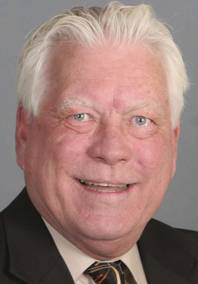Friday, May 7, 2010 | 3 a.m.

When it comes to renewable energy, Nevada boasts a sunny disposition on this industry. Rich in energy resources, such as geothermal, solar, wind and biomass, renewable energy is a natural fit for the state. Our state has a unique opportunity to reduce energy costs and grow its economy while achieving energy independence.
Nevada is a leader in geothermal and solar power potential and much of the state is suitable for wind power development. The Colorado River, which forms Nevada’s southern border, is a powerful hydroelectric power resource. Our state is leading in per capita solar energy production. The federal government has shown commitment to the development of renewable energy and created solar investment tax credits that will continue to stimulate investment and job creation in the solar industry.
Nevada has taken a leadership role in the nation’s effort to reduce reliance on fossil fuels and foreign oil by becoming one of the first states in the nation to adopt a renewable portfolio standard (RPS). As part of our 1997 restructuring legislation, state law mandates that a significant portion of the energy Nevada sells to its customers comes from renewable sources. In the 2009 legislative session, Nevada renewed its commitment to energy independence by extending and increasing the RPS to 25 percent renewable energy by 2025.
In terms of reducing global carbon dioxide, which leads to global warming, alternatives to nonrenewable energy sources such as coal, nuclear fission and natural gas have many advantages including improved air quality and other potential environmental and health benefits. Generating renewable energy tends to be more expensive than traditional carbon-based energy production; however, the technology around renewable energy continues to improve production efficiencies and bring the cost of renewable sources closer to price parity with traditional energy production. Technological advances in renewable energy production will be a key factor in the long-term success of this industry. Nevada is focused on supporting and creating state-of-the-art research and development facilities that will help incubate this process. Public-private partnerships and the engagement of the higher education community will lead to new technology being created in Nevada by Nevada institutions and companies.
To help facilitate the renewable projects required by the RPS, the 2009 Legislature renewed and improved its financial incentive program for renewable energy generators. Projects are eligible for significant sales and payroll tax abatements. In addition, they are eligible for 55 percent property tax abatements for 20 years. This is a significant improvement over previous legislation and illustrates Nevada’s proclivity to supporting these developments. Nevada understands that providing financial incentives to developers will significantly improve its chances of capturing market share for energy production. Other states are also increasing their financial incentive packages, and it is a highly competitive environment.
A factor hindering the development of statewide renewable energy resources has been the fact that a significant portion of the area feasible for renewable energy generation is not currently connected to adequate transmission technology. Many measures have been taken to develop the necessary infrastructure to exploit the energy potential. For example, Gov. Jim Gibbons issued an executive order forming the Renewable Energy Transmission Access Advisory Committee to advise policymakers on the most efficient means to access a transmission system grid that would enable transfer of energy across the state. Currently, the committee is implementing its recommendation to construct 14 transmission routes in Nevada.
Another encouraging development is the investment in a 250-mile transmission line that will connect NV Energy in Reno and Las Vegas. The transmission line will allow the companies to add new renewable resources and continue to diversify NV Energy’s portfolio. Connecting NV Energy in the north and south will also allow solar power developed in Southern Nevada to be transmitted to Northern Nevada. The abundant geothermal power in Northern Nevada will also be transmitted to Southern Nevada across the same line. Research is also being done around state-of-the-art “smart-grid” technology. Nevada has the ability to be a prime beta site for this new technology because of the wide variety of energy sources being used in the state. Smart grid technology transfers energy from generation facilities to cover peak energy consumption in a very efficient manner.
Mike Skaggs executive director of the Nevada Commission on Economic Development NCED serves as a resource to businesses considering relocating to the state, planning expansion or for those interested in starting a new business.


Join the Discussion:
Check this out for a full explanation of our conversion to the LiveFyre commenting system and instructions on how to sign up for an account.
Full comments policy